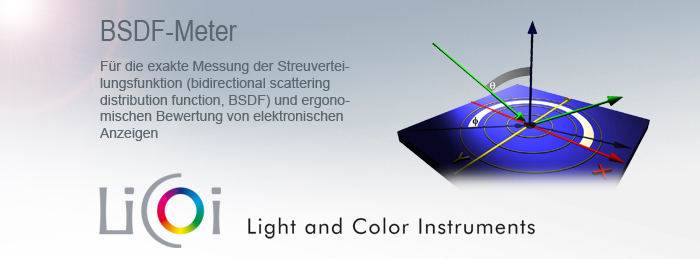Sprachauswahl
SUCHE

INFO CENTER
Produkte |
Systemaufbau und Komponenten The bidirectional scattering distribution function (BSDF) is a generalization of the concept of the BRDF (bidirectional reflectance distribution function) since it comprises scattering effects for both transmission and reflection. Coordinate system for description of the geometry of light source, S, object to be measured (DUT) and imaging photometer, (receiver, usually an imaging photometer). Measurement Procedure Advantages of the approach
Limitations
Applications
|
